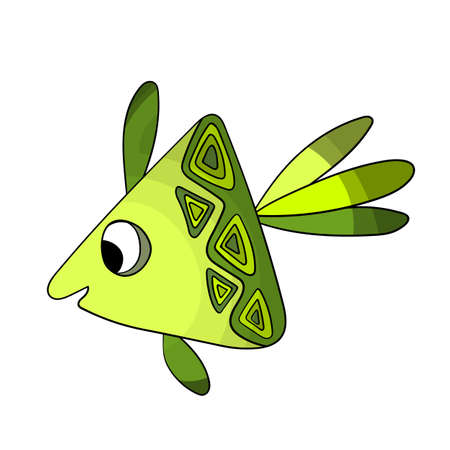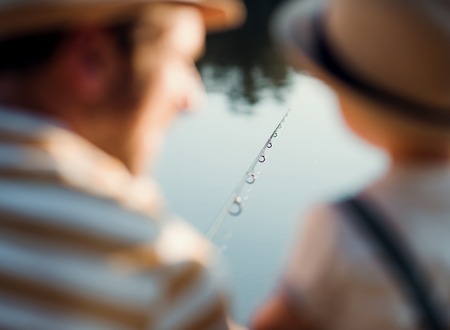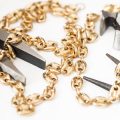1. Understanding Midwest Lake Conditions in Summer
Fishing during summer in the Midwest can be a blast, but knowing how lake conditions change this time of year is key—especially when youre baitcasting. Whether youre casting into a crystal-clear lake or murky waters, understanding how weather affects the environment helps you figure out where fish are and what theyre biting on.
How Summer Weather Affects Midwest Lakes
Midwest summers bring warm temperatures, high humidity, and plenty of sunshine. These seasonal patterns influence water temperature, clarity, and fish behavior in different ways depending on the type of lake youre fishing.
Water Temperature
As summer rolls in, surface water temperatures can rise quickly—often reaching the mid-70s to low 80s (°F). Warmer water holds less oxygen, which causes fish to move deeper or seek shaded areas to stay comfortable. In clear lakes, bass and other gamefish may head for drop-offs or underwater structures. In murky lakes, they might hold tight to cover like logs or weed beds.
Water Clarity
Summer storms and algae blooms can change water clarity fast. Heres how that usually plays out:
| Lake Type | Clarity Changes | Main Causes |
|---|---|---|
| Clear Lakes | Slightly reduced clarity after rain | Runoff, minor algae growth |
| Murky Lakes | Visibility often gets worse | Muddy runoff, heavy algae blooms |
This means your baitcasting strategy needs to shift. In clear water with better visibility, natural-colored lures work well. In murky water where fish rely more on sound and vibration, youll want brighter colors or noisy baits.
Fish Behavior in Clear vs. Murky Lakes
The difference in water clarity has a big impact on how fish act:
| Lake Type | Common Fish Behavior | Baitcasting Tip |
|---|---|---|
| Clear Lakes | Sight-feeding; spook easily | Use long casts and stealthy approaches with natural-looking lures |
| Murky Lakes | Aggressive reaction strikes; rely on senses other than sight | Loud or vibrating lures help fish locate your bait faster |
The more you pay attention to these seasonal changes, the better your chances of landing that trophy bass—or at least getting some steady bites throughout the day.
2. Gear Setup for Effective Baitcasting
When it comes to summer baitcasting in the Midwest, having the right gear setup can make a big difference—especially when switching between clear and murky lakes. The rod, reel, and line you choose should match the water conditions to maximize your chances of landing that big bass.
Rod Selection
Your rod is your most important tool in baitcasting. For summertime fishing, especially when working with different water clarities, here’s what to keep in mind:
| Water Condition | Rod Length | Rod Power | Rod Action |
|---|---|---|---|
| Clear Water | 610″ – 73″ | Medium to Medium-Heavy | Fast Action |
| Murky Water | 70″ – 76″ | Heavy | Moderate-Fast Action |
Tips: In clear water, use a more sensitive rod for finesse presentations like soft plastics or jerkbaits. In murky water, go heavier to handle larger lures and punch through vegetation.
Reel Specs
The right baitcasting reel helps control your casting distance and retrieve speed. During summer, fish can be aggressive, especially in warm water. Here’s how to adjust:
| Water Condition | Gear Ratio | Brake System | Bearing Count |
|---|---|---|---|
| Clear Water | 6.4:1 – 7.1:1 | Centrifugal or Dual Brake (for control) | At least 5+1 Bearings |
| Murky Water | 7.1:1 – 8.1:1 | Magnetic Brake (for power) | 5+1 or Higher Bearings for Smoothness |
Tips: Faster gear ratios help burn spinnerbaits and chatterbaits across shallow murky flats, while slower ratios in clear water give you better control during finesse retrieves.
Line Choices
Your line is the final connection to your catch. Choosing the right type and pound test based on water clarity is key:
| Water Condition | Line Type | Pound Test Range | Main Advantage |
|---|---|---|---|
| Clear Water | Fluorocarbon | 10–15 lb test (depending on cover) | Naturally invisible underwater; great sensitivity. |
| Murky Water | Braided Line with Fluoro Leader or Straight Braid | Mainline: 30–50 lb braid Leader: 15–20 lb fluoro (optional) |
Toughness, strength for heavy cover and big hooksets. |
Tips: In clear lakes like Table Rock or Lake Geneva, lighter fluorocarbon helps trick pressured fish. In stained waters like Lake Shelbyville or Lake of the Ozarks after rainfall, braided line cuts through weeds and boosts sensitivity.
Tuning Your Setup by Technique & Lure Type
| Lure Type | Recommended Rod/Reel/Line Combo (General) |
|---|---|
| Craws & Worms (Clear Water) | Mediuм rod with fast action / 6.4:1 reel / 12 lb fluorocarbon line |
| Spooning/Deep Cranks (Clear Water) | Mediuм-heavy rod / 5.4:1 – 6.4:1 reel / 10–12 lb fluorocarbon line |
| Spinnerbaits/Chatterbaits (Murky Water) | Mediuм-heavy to heavy rod / 7.1:1 reel / 40 lb braid |
| Punching Jigs/Frogging (Murky Water) | Heavy rod / 8.1:1 reel / 50–65 lb braid |
| Twitch Baits/Topwater (Both Conditions) | Mediuм rod / 6.8:1 reel / Mono or braid with mono leader |
No matter where youre fishing this summer—from crystal-clear glacial lakes to muddy reservoirs—fine-tuning your baitcasting gear will help you adapt fast and stay on the bite all day long.

3. Top Bait Choices for Clear Water Lakes
Fishing clear water lakes during the summer in the Midwest can be both exciting and challenging. Because visibility is high, bass tend to be more cautious, making bait selection especially important. When using a baitcasting setup, you’ll want to lean into natural-looking presentations that mimic real prey. Below are some of the most reliable bait choices to help you get more bites in clear water conditions.
Soft Plastics
Soft plastics are a go-to for many Midwest anglers targeting clear lakes. Their lifelike appearance and subtle action make them ideal for fooling finicky bass. Use natural colors like watermelon, green pumpkin, or shad patterns to match local forage.
Recommended Soft Plastics:
| Bait Type | Best Rigging Method | When to Use |
|---|---|---|
| Stick Worms (e.g., Senko) | Wacky Rig or Texas Rig | Midday around docks and weedlines |
| Dropshot Worms | Dropshot Rig | Deep points and ledges |
| Craw-style Baits | Ned Rig or Texas Rig | Rocky shorelines and bottom structures |
Finesse Jigs
In clearer waters, big flashy jigs can spook fish. Instead, opt for smaller finesse jigs with subtle trailers. These baits work great when dragged slowly along the bottom or hopped through rocky areas.
Tips for Finesse Jig Fishing:
- Select natural colors like brown, green pumpkin, or black/blue flake.
- Add a small craw trailer for realistic movement.
- Use light fluorocarbon line (8–12 lb test) for stealthy presentations.
Jerkbaits
Suspending jerkbaits shine in clear lakes because their darting action mimics injured baitfish. Theyre especially effective during early mornings or on overcast days when bass are chasing prey near the surface.
Popular Jerkbait Options:
| Bait Name | Diving Depth | Main Use |
|---|---|---|
| Megabass Vision 110 | 3–5 ft | Casting over points and flats |
| Lucky Craft Pointer 100SP | 4–6 ft | Suspend near drop-offs and weed edges |
No matter which bait you choose, always keep an eye on water clarity, light conditions, and fish behavior. Subtle presentations matched with realistic colors are key when fishing Midwest lakes during summertime.
4. Tactics and Lures for Murky Water Lakes
Fishing in murky or stained lakes during the Midwest summer can be a totally different game compared to clear water spots. In these conditions, visibility is low, so bass rely more on vibration and sound than sight. That means your baitcasting tactics need to adapt if you want to hook into more fish.
Use Vibration-Heavy Lures
One of the best ways to attract bass in murky water is by using lures that make a lot of noise or vibration. These help fish detect your bait even when they cant see it clearly. Here are a few top choices:
| Lure Type | Description | Best Use |
|---|---|---|
| Lipless Crankbaits | Rattle loudly and vibrate with fast retrieves | Covering lots of water quickly |
| Spinnerbaits | Flashy blades and strong vibrations | Around structure and weed edges |
| Chatterbaits (Bladed Jigs) | Loud vibration with skirted body for bulk | Low-light hours or heavy stain |
Select the Right Colors
Color choice plays a big role in murky water where visibility is limited. Bright or dark-colored baits stand out better than natural tones. Heres a quick guide:
| Bait Color | When to Use It |
|---|---|
| Chartreuse or Fire Tiger | Great for sunny days with moderate stain |
| Black or Junebug | Killer in heavily stained or muddy water |
| White or Shad Imitations | If baitfish are active near the surface |
Aggressive Retrieval Techniques Work Best
You’ll want to fish more aggressively in murky lakes. Bass often strike out of reaction when they hear or feel something moving fast and erratic through the water. Try these techniques:
- Pump-and-Pause: Reel quickly for a few seconds, then pause to let your lure flutter down.
- Bumping Cover: Let your bait crash into logs, rocks, and other underwater structures—this creates extra noise.
- Straight Burn: A fast, steady retrieve can trigger instinctive strikes from nearby bass.
Baitcasting Setup Tips for Murky Water
A good baitcasting setup helps you cast heavier lures farther and control them better around cover. Heres what many Midwest anglers prefer:
| Tackle Component | Recommended Option |
|---|---|
| Rod Power & Action | Medium-heavy power, fast action tip for hook-setting power and sensitivity |
| Main Line Type & Strength | Braided line (30–50 lb) – better for cutting through weeds and better feel in low-vis water |
| Lure Weight Range | Lures between 1/2 oz to 1 oz are ideal for vibration-heavy presentations |
The key in murky lakes is making sure bass can find your bait. With the right lures, colors, and retrieval style, youll have no trouble pulling some solid fish out of stained waters this summer in the Midwest.
5. Locating Summer Bass Hotspots
Finding bass during the summer in Midwest lakes—whether clear or murky—requires understanding how these fish react to changing water temperatures, sunlight, and available cover. Here’s how you can locate the most productive spots using baitcasting gear.
Understand Seasonal Behavior
In summer, bass tend to move to deeper, cooler waters during the heat of the day and feed more actively during early morning and late evening hours. Pay attention to where shade, structure, and current come into play.
Key Factors for Finding Bass
| Factor | Clear Lakes | Murky Lakes |
|---|---|---|
| Structure | Rock piles, weed lines, submerged points visible through the water | Lily pads, laydowns, man-made structures that provide ambush cover |
| Depth | Bass often suspend around 15-25 feet near drop-offs or thermoclines | Bass stay shallower (5-10 feet), especially around visible cover |
| Shade | Docks, overhanging trees, shadowed banks during mid-day | Matted vegetation and muddy banks offer needed protection from sunlight |
| Current | Main lake points with slight current or breeze to bring in oxygen-rich water | Creek mouths or areas near inflows where water movement stirs up food sources |
Baitcasting Strategy Tips by Water Clarity
For Clear Lakes:
- Use natural-colored soft plastics or jerkbaits on deep structure.
- Aim for early mornings and evenings when bass are closer to shore.
- Casting parallel to drop-offs helps keep your lure in the strike zone longer.
For Murky Lakes:
- Select noisy or vibration-heavy lures like spinnerbaits or squarebill crankbaits.
- Casts should target shallow cover repeatedly—bass rely on feel more than sight here.
- Punch through thick vegetation using heavy jigs or Texas-rigged soft plastics.
Simplify Your Search With a Fish Finder
If youre fishing from a boat, a good sonar unit can help you locate baitfish schools and identify underwater structures like humps and ledges where bass may be staging. In clear lakes, look for suspended marks; in murky waters, focus on bottom-hugging returns near cover.
Bass in Midwest lakes don’t disappear in summer—they just get a little harder to find. Use these tactics to key in on their preferred locations based on the water conditions you’re fishing in.


